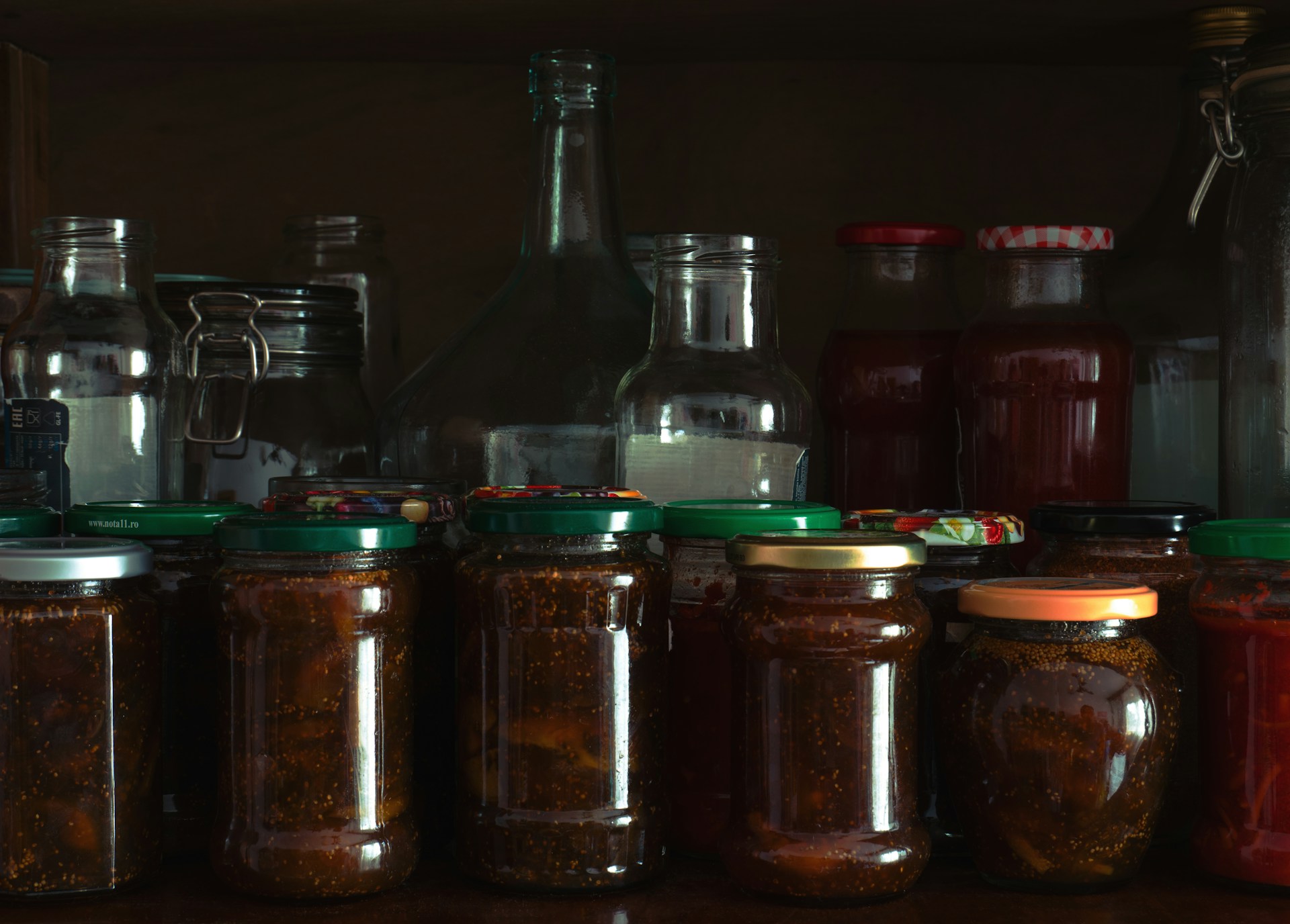Preparedness
Duct Tape: The Ultimate Survival Tool You Didn’t Know

When navigating the unpredictable challenges of an emergency, having a versatile tool on hand can be a game-changer. One such tool, often overlooked, is duct tape. Known for its strength and adaptability, duct tape can be a lifesaver in various survival scenarios, from medical emergencies to shelter construction.
Duct tape’s reputation as “the handyman’s secret weapon” is well-earned, thanks to its remarkable versatility. Its durability and adhesive strength make it suitable for a multitude of tasks, especially in outdoor survival situations. This simple tool can bond with almost any material, including wood, metal, fabric, and plastic, and its waterproof nature makes it ideal for preventing leaks.
In survival settings, duct tape can be used to patch holes, secure items, create makeshift shelters, and repair essential gear like backpacks and boots. Additionally, it can be twisted or braided to form strong ropes and cords, which are invaluable for securing gear and setting up shelters. Its ease of use—requiring no special skills or tools—makes it a must-have in any survival kit.
For those looking to maximize the utility of duct tape in emergencies, it’s advisable to pair it with a multi-tool or scissors for cutting. This combination ensures you’re prepared for a wide range of scenarios without adding significant weight to your gear.
The uses of duct tape in an emergency kit are extensive. It can temporarily address wounds, stabilize injuries, and prevent leaks until professional medical treatment is available. Its adhesive strength is sufficient to hold cuts closed, secure bandages, or immobilize injured limbs.
Furthermore, duct tape can be used to repair survival gear, keeping essential items functional during crises. Whether it’s patching holes, insulating pipes, or preventing further damage, duct tape offers quick fixes until permanent solutions can be implemented.
In first aid situations, duct tape can be a last resort for wound care. Although it is stickier than medical tape, it can cover wounds effectively in emergencies. However, caution is advised, as removing duct tape may reopen wounds. To mitigate this, apply gauze or a non-stick bandage beneath the tape and ensure the skin is clean and dry before application.
For fractures, duct tape can create emergency splints. Wrap it around rigid items like branches or magazines to immobilize the injury, ensuring not to restrict circulation. In long-distance trekking, duct tape can prevent and treat blisters by reducing skin friction.
In the wilderness, duct tape is invaluable for gear maintenance. It can patch rips in jackets or leaks in tents, provided the surfaces are clean and dry. It also reinforces vulnerable areas prone to wear and tear, such as shoe soles or pack straps, offering an extra layer of protection.
Duct tape’s utility extends to shelter enhancements. It can seal gaps and cracks, patch tent holes, and even create makeshift hot water bottles. In emergencies, duct tape can be fashioned into containers or even temporary clothing, like shoes or gloves, offering protection from the elements.
For food procurement, duct tape can be used to repair nets or construct basic hunting tools. Its reflective properties can also serve as signaling devices, increasing visibility in rescue situations.
In summary, duct tape’s adaptability makes it an indispensable item for any survival kit. Its ability to address a wide range of needs—from crafting gear and tools to administering first aid and making repairs—ensures it plays a crucial role in emergency preparedness. Compact and affordable, duct tape is a small investment that can yield significant returns in survival situations.
Let us know what you think, please share your thoughts in the comments below.

Preparedness
Master Your Harvest: Essential Tips for Preserving Summer Bounty

When your summer garden is bursting with more produce than you can consume, it’s crucial to have a strategy to preserve your bounty. The simultaneous ripening of tomatoes, the accumulation of cucumbers, and the rapid bolting of herbs in the heat can lead to a surplus that, if not properly stored, will lose its flavor or eventually spoil. Without effective preservation, your hard-earned harvest becomes waste.
Preserving your summer harvest allows you to extend the enjoyment of your produce into the fall and winter months. This article explores three essential preservation methods: canning, freezing, and drying, each with straightforward steps and safety tips for beginners.
Summer is a season of abundance on the homestead, but this bounty is fleeting. Fresh produce is particularly susceptible to spoilage in hot or humid conditions. Without proper storage techniques, the fruits of your labor can quickly vanish.
Preservation not only reduces waste but also has several other benefits. It minimizes trips to the store during colder months, gives you control over the ingredients and quality of your food, and enhances food security using resources already available in your soil.
Each preservation method is best suited for different types of produce. Even if you’re new to these techniques, you can start with one and expand your skills over time. Canning provides pantry staples, freezing maintains flavor and texture, and drying requires minimal space while keeping herbs ready for use throughout the year.
Canning is an excellent way to store produce for a year or more. This method uses heat to create a vacuum seal in jars, preventing the growth of bacteria and mold. There are two safe canning methods: water bath canning for acidic foods and pressure canning for low-acid vegetables.
“Best for: jams, jellies, fruit preserves, pickles, tomatoes (with added acid).”
To begin canning, wash jars and lids, keeping jars warm until filled. After processing, remove jars and allow them to cool for 12 to 24 hours. For tested recipes and guidance, visit the National Center for Home Food Preservation.
Certain vegetables, like green beans, corn, and carrots, are too low in acid to be safely processed in a boiling water bath. Pressure canning uses higher heat to safely preserve these foods for long-term storage.
“Load jars into the canner and lock the lid. Bring to the correct pressure and start timing. Allow pressure to return to zero before opening.”
Freezing is a quick and flexible method for preserving most produce, maintaining food close to its original flavor and texture. However, many vegetables need blanching first to halt enzymes that cause spoilage.
“Blanch vegetables in boiling water for 1 to 4 minutes. Transfer to an ice bath. Drain and dry completely. Label with date and freeze flat to save space.”
Drying removes moisture to prevent spoilage and is particularly effective for herbs, sliced fruit, and thin vegetables like tomatoes or peppers.
“Dry at 125 to 135°F until brittle or leathery. Keep dried food in sealed containers away from light.”
Choosing the appropriate preservation method depends on the specific fruits and vegetables you have. Some require heat to stay safe, while others are best when frozen or dried. A quick reference chart can help match your produce with the best method, necessary tools, and typical shelf life.
Preserving your summer harvest requires patience and planning, but it rewards you every time you reach for a jar of home-canned sauce or a handful of dried herbs. These preserved foods offer more than just flavor; they embody value, effort, and security.
The habits you establish now will benefit you throughout the year. The more you store, the less you need from external sources, marking genuine progress on the homestead.
“What’s your favorite way to store your harvest? Drop your tips or go-to recipes in the comments below.”
Let us know what you think, please share your thoughts in the comments below.
Preparedness
Master Self-Sufficiency: Tips for Going Off-Grid Effortlessly

The journey towards a self-sufficient lifestyle is a profound one, often sparked by the desire to reduce reliance on external systems and embrace a more autonomous way of living. While the idea of completely going off-grid may seem daunting, there are practical steps you can take to ease into this lifestyle transition.
A foundational step in becoming self-sufficient is growing your own food. This not only provides sustenance but also instills confidence in your ability to support your family independently. Begin small with a kitchen garden, cultivating herbs and gradually expanding to a backyard garden with vegetables your family enjoys.
As you gain experience, consider planting successive crops. This technique involves planting seeds at intervals of 7 to 21 days, ensuring a steady supply of produce. Additionally, if space permits, planting fruit trees or shrubs can diversify your food sources, offering fruits and berries.
Composting is another essential practice for those seeking self-sufficiency. It maximizes the use of available resources and significantly enriches the soil for your garden. “It’s making use of what you have and not wasting it.” Seed saving is equally important, allowing you to maintain a sustainable food supply year after year.
Incorporating protein into your diet through self-sufficient means involves raising livestock. Many start with chickens for a steady supply of fresh eggs. If space allows, consider raising a dairy animal, bringing you closer to a self-sufficient lifestyle. Moreover, learning to butcher livestock and mastering hunting and fishing are invaluable skills that ensure you never go hungry.
Transitioning to off-grid living also requires adapting your cooking habits. If you’re accustomed to dining out or using pre-made products, now is the time to learn to cook from scratch. Start with simple dishes using homegrown ingredients and gradually progress to making your own dairy products, such as butter.
Water independence is crucial for off-grid living. Installing a well on your property provides a reliable water source. “Wells are very reliable water sources.” Additionally, collecting rainwater can supplement your water needs, especially for agricultural purposes.
Energy self-sufficiency is another key aspect of off-grid living. Explore alternative energy sources like solar power, wind turbines, or micro-hydro systems, depending on your location. If a full transition isn’t feasible immediately, begin by investing in green energy tools and energy-efficient appliances.
Heating your home sustainably is vital, especially during colder months. A wood-burning fireplace or stove is an excellent investment for this purpose. To prepare for unexpected energy shortages, keeping a backup generator is wise.
Adopting a self-sufficient mindset involves changing daily habits. Line-drying clothes, reusing items, and attempting DIY projects before seeking outside help are practical steps. “Homesteaders should never throw anything away until they have considered how they may reuse it.”
Long-term preparation is critical for a self-sufficient lifestyle. Learn various food preservation methods, such as canning and dehydrating, to ensure your pantry remains stocked with essentials like rice, beans, and pasta. By taking these steps, you can gradually transition to a more self-reliant and fulfilling way of life.
Let us know what you think, please share your thoughts in the comments below.
Preparedness
Unlock Homesteading Secrets for Tiny Spaces and Ultimate Self-Reliance

If you’ve ever thought that homesteading is out of reach due to limited space, it’s time to rethink that notion. With a bit of ingenuity, you can adopt the homesteading lifestyle even in the smallest of areas. Whether you’re working with a modest backyard, a balcony, or just a windowsill, transforming your space into a hub of sustainable living is entirely feasible.
One crucial strategy for small-space gardening is to “think vertically.” Vertical gardening maximizes available space by making use of walls, fences, and trellises. Consider investing in or crafting your own hanging or vertical planters from repurposed materials. This approach enables you to cultivate a diverse array of herbs, vegetables, and even fruits within your limited area.
For those with a balcony, porch, or windowsill, container gardening offers a versatile solution. Select pots of varying sizes and materials, ensuring they have adequate drainage. A lightweight potting mix is ideal, and self-watering containers can add convenience to your gardening efforts.
Starting your homestead with herbs is both easy and rewarding. Herbs like basil, mint, rosemary, thyme, and parsley are compact and thrive in small spaces. “Snip some fresh herbs whenever you need them, and savor the taste of homegrown goodness.”
Collecting rainwater doesn’t require a vast expanse. Install rain barrels or small water tanks to gather rainwater from your roof or balcony. This practice not only nourishes your plants but also diminishes your dependence on municipal water supplies.
Composting is a fundamental practice for any homesteader, regardless of space limitations. Kitchen scraps, yard waste, and even some paper products can be composted. Explore methods such as worm composting or bokashi composting, which are well-suited for small spaces. This not only reduces waste but also generates nutrient-rich soil for your plants.
Repurposing and upcycling are at the heart of the homesteading spirit, and space constraints are no barrier. Transform old pallets into raised beds, start seeds in mason jars, or turn old furniture into planters. The possibilities are endless, allowing you to save money while adding a personal touch to your homestead.
Self-sufficiency is a core aspect of homesteading, and it isn’t limited by the size of your space. Learning essential survival skills, like building a fire or purifying water, is invaluable. Engage in survival classes, join local garden clubs, and connect with local farmers. “The key is to get started and prepare now for unforeseen disasters.”
Let us know what you think, please share your thoughts in the comments below.
-

 Tactical1 year ago
Tactical1 year ago70-Year-Old Fends Off Intruder with Lead-Powered Message
-

 Tactical1 year ago
Tactical1 year agoVape Shop Employee Confronts Armed Crooks, Sends Them Running
-

 Preparedness11 months ago
Preparedness11 months agoEx-Ballerina’s Guilty Verdict Sends Tremors Through Gun-Owner Community
-

 Preparedness10 months ago
Preparedness10 months agoGood Samaritan Saves Trooper in Harrowing Interstate Confrontation
-

 Tactical1 year ago
Tactical1 year agoMidnight SUV Theft Interrupted by Armed Homeowner’s Retaliation
-

 Survival Stories2 years ago
Survival Stories2 years agoEmily’s 30-Day Experience of Being Stranded on a Desert Island
-

 Preparedness10 months ago
Preparedness10 months agoArizona Engineer’s Headless Body Found in Desert: Friend Charged
-

 Preparedness10 months ago
Preparedness10 months agoBoy Saves Dad from Bear Attack with One Perfect Shot